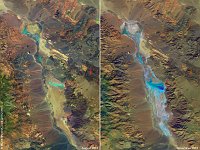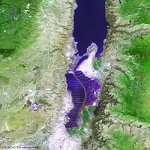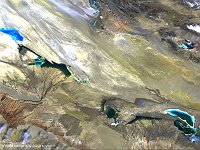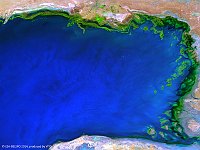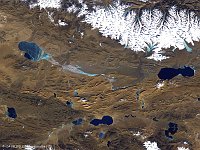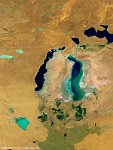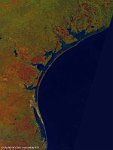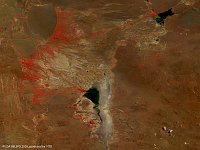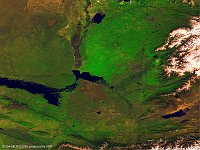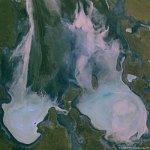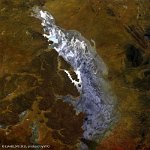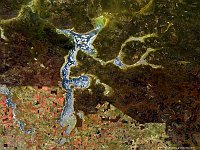27 / 52
Aral Sea, Kazakhstan
The 100 m false-colour image of 25 October 2015 shows us the Aral Sea, an endorheic lake lying between Kazakhstan (Aktobe and Kyzylorda Regions) in the south and Uzbekistan (Karakalpakstan autonomous region) in the north. Formerly one of the four largest lakes in the world with an area of 68,000 km², the Aral Sea has been steadily shrinking since the 1960s. By 2007, it had declined to 10% of its original size, splitting into four lakes – the North Aral Sea, the eastern and western basins of the once far larger South Aral Sea, and one smaller lake between the North and South Aral Seas. By 2009, the southeastern lake had disappeared and the southwestern lake had retreated to a thin strip at the western edge of the former southern sea; in subsequent years, occasional water flows have led to the southeastern lake sometimes being replenished to a small degree. In an ongoing effort in Kazakhstan to save and replenish the North Aral Sea, a dam project was completed in 2005; in 2008, the water level in this lake had risen by 12 m compared to 2003. Salinity has dropped, and fish are again found in sufficient numbers for some fishing to be viable.
Date: 25/10/2015
Resolution: 300m
